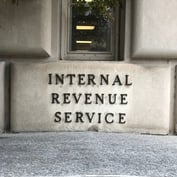What You Need to Know
- Bond investors seem to accept low returns going forward, Morningstar's John Rekenthaler writes.
- Bonds have delivered radically different returns over different time periods.
- Stocks, overall, have performed more consistently, he writes.
Investors may already be accepting the fact that bond returns — and possibly stock returns — won’t be what they were in the past. It seems bond investors have already accepted lower future performance than what has been seen over the past 40 years, but for stock investors, accepting lower returns is not a given.
This is the conclusion of John Rekenthaler, Morningstar’s vice president of research, in his recent column, “What’s the Future for Bond and Stock Returns?”
Furthermore, history doesn’t necessary provide a clear baseline for where returns for both bonds and stocks will be in the future.
Long Bonds
Rekenthaler notes that the “history of the U.S. bond market can be summarized in three words: bad, then good.”
The nominal return for long U.S. government bonds annualized from 1950 to 1979 was 2.27%, while from 1980 to 2019, it was 8.91%, Rekenthaler says. He notes that adjusting for inflation, real bond return from 1950 to 1979 was -1.69%, while from 1980 it was 5.64%.
He says: “Not only was inflation higher in the first period than in the second, but the rate of inflation also exceeded the returns from long bonds, meaning that in real terms long bonds were losers. The longer investors held them, the poorer they became.”
Therefore, a $10,000 investment in bonds in 1950 would have returned only $6,000 over the next three decades, while the same investment in 1980 would have grown to $90,000 in the next 40 years. As he says: “For one generation, long bonds meant penury. For the next, they meant prosperity.”
But the generational divide might be due to bonds behaving differently because investors changed, Rekenthaler states. The 1950s generation was coming off the Great Depression, and a 2% yield on long bonds, despite inflation, seemed acceptable, as stocks and cash weren’t performing either.
But that changed in the 1970s, when stocks had better returns than bonds. “Investors therefore demanded more from bonds,” he writes, and at the end of that decade, the 30-year Treasury yield was 10.3%. With bond yields now back at 2%, he says, and inflation projected at 2.3%, investors once again could lose holding these products.









 July 19, 2021 at 05:32 PM
July 19, 2021 at 05:32 PM











